
| Lewin's Bag Shelter Moth (one synonym : Semuta pristina Walker, 1865) PANACELINAE, EUPTEROTIDAE, BOMBYCOIDEA | (donherbisonevans@yahoo.com) and Stella Crossley |
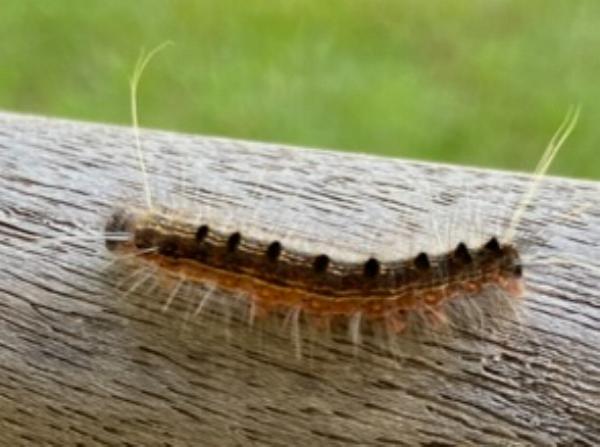
(Photo: Kiana Toupin, Mooball, New South Wales)

| Lewin's Bag Shelter Moth (one synonym : Semuta pristina Walker, 1865) PANACELINAE, EUPTEROTIDAE, BOMBYCOIDEA | (donherbisonevans@yahoo.com) and Stella Crossley |

(Photo: Kiana Toupin, Mooball, New South Wales)
These Caterpillars are hairy and brown, with a yellow zig-zag line along each side, and with a dark brown head capsule that has a large white spot in the middle. The hairs can cause irritation if they contact the skin (Urticaria).

The caterpillars live communally in a shelter on their food plant, made of leaves joined by silk, decorated with cast larval skins. The caterpillars hide in the shelter by day, coming out to feed at night. If disturbed, they make a scraping sound inside their shelter.
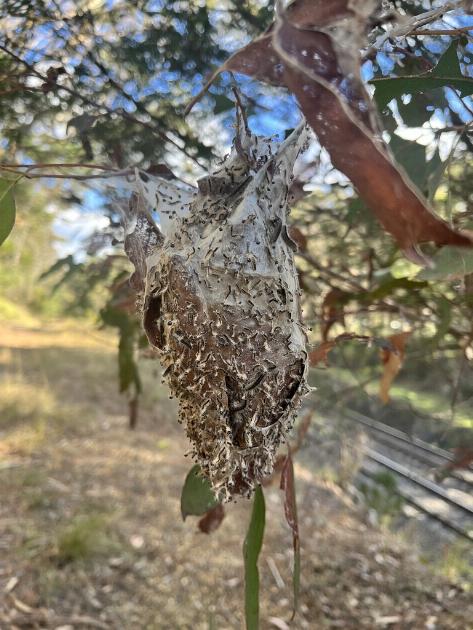
The caterpillars have been found feeding on trees from various families, including the introduced:
and the Australian natives:
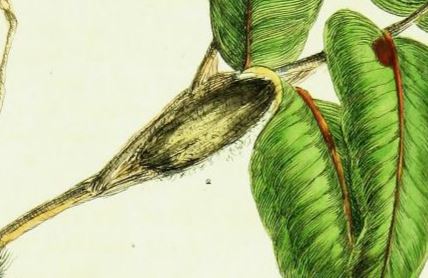
The caterpillar pupates in a cocoon incorporating larval hairs, often in a curled leaf on its foodplant.
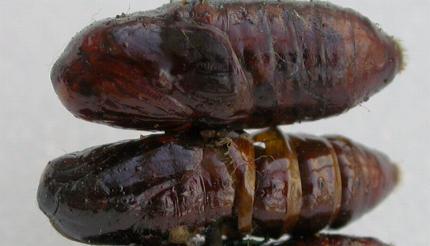
The pupa is brown and tubby.
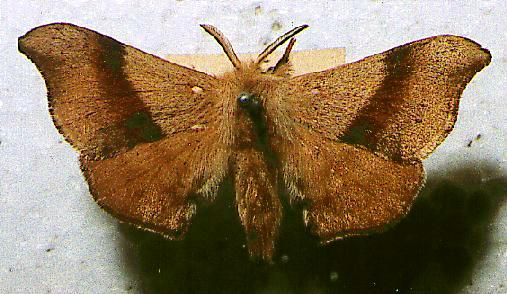
The adult moths are dimorphic. The male is pale brown with a variable dark band across each forewing. He has a tendency to rest with his head down and his tail up.
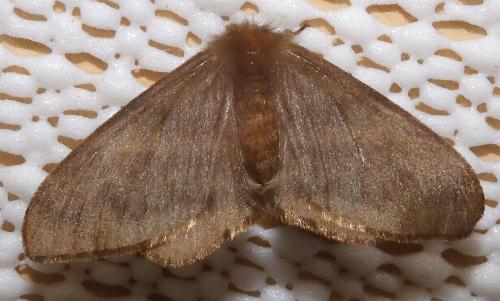
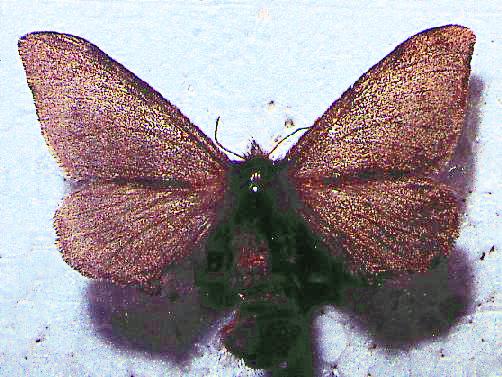
female
(Specimen: courtesy of the
The Australian Museum)
The females are a uniform dark brown, and have a large tuft of hair on the tail. The males and females both have a wingspan of about 3 cms.
The species occurs in the east of Australia, including
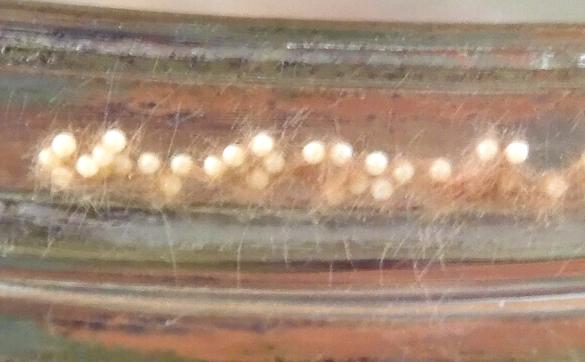
The eggs are white and spherical with a diameter of about 0.3 mm. They are laid anywhere in irregular clusters and accompanied with hairs from the female abdomen.
Further reading :
David Carter,
Butterflies and Moths,
Collins Eyewitness Handbooks, Sydney 1992, p. 211.
Ian F.B. Common,
Moths of Australia,
Melbourne University Press, 1990, pls. 14,11,14.13, pp. 67,69,399.
Peter Hendry,
At the light trap,
Butterflies and Other Invertebrates Club Newsletter,
Issue 45 (June 2007), pp. 18-22.
Peter Hendry,
Mt Glorious- Saturday 28th November 2009,,
Butterflies and Other Invertebrates Club,
Metamorphosis Australia,
Issue 56 (March 2010), pp. 32-33.
John William Lewin,
Prodromus Entomology,
Natural History of Lepidopterous Insects of New South Wales,
London : T. Bensley (1805), p. 7, and also
Plate 6.
Peter Marriott,
Moths of Victoria - Part 1,
Silk Moths and Allies - BOMBYCOIDEA,
Entomological Society of Victoria, 2008, pp. 24-25.
Buck Richardson,
Tropical Queensland Wildlife from Dusk to Dawn Science and Art,
LeapFrogOz, Kuranda, 2015, p. 55.
Paul Zborowsky and Ted Edwards
A Guide To Australian Moths,
CSIRO Publishing, Melbourne 2007, pp. 158,177.
 caterpillar |  butterflies |  Lepidoptera |  moths |  caterpillar |
(updated 7 April 2013, 6 October 2025)